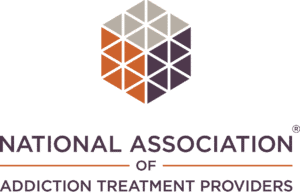Addiction is a multifaceted phenomenon that transcends simple explanations or solutions. Historically, society’s understanding of addiction has shifted dramatically, from seeing it as a moral failing to recognizing it as a complex, chronic condition that can be treated. This evolution in thought culminates in the Disease Model of Addiction, which posits addiction as a disease with biological, neurological, genetic, and environmental origins. This model is now widely accepted among psychiatric authorities, including the National Institute on Drug Abuse (NIDA), and represents a significant shift in how addiction is perceived and treated.
Core Tenets of the Disease Model of Addiction
The Disease Model of Addiction delineates addiction as a condition characterized by an abnormal state that induces discomfort, dysfunction, or distress. It emphasizes the role of the brain’s mesolimbic pathway and acknowledges the potential influence of other biological, psychological, or sociological factors. This model has highlighted the common biomolecular mechanisms, such as CREB and ΔFosB, underlying all forms of addiction, revealing the profound impact that substances can have on the brain’s structure and function.
Genetic and Environmental Influences
Research underscores the significant role of genetic factors and mental disorders in the severity of drug addiction, with about fifty percent of the susceptibility to addiction attributed to genetic factors. This insight emphasizes the importance of considering an individual’s genetic background in understanding their risk of developing an addiction.
Stigma and the Disease Model
One of the pivotal discussions around the Disease Model of Addiction concerns the stigma associated with addiction. The model seeks to reduce stigma by framing addiction as a medical issue rather than a moral failing. Reducing stigma is crucial for encouraging individuals with Substance Use Disorders (SUDs) to seek and receive proper treatment. Research has shown that beliefs about the disease model of addiction correlate with attitudes towards individuals with SUDs, suggesting that education on this model could play a vital role in decreasing stigma and promoting treatment engagement.
The Brain Disease Model of Addiction
Advances in neuroscience have played a crucial role in shaping the Brain Disease Model of Addiction, which views addiction as a chronic brain disorder. This perspective is less stigmatizing and opens the door to the development of medications to treat the disease. It is supported by evidence showing observable brain changes in individuals with addiction. The model outlines a repeating cycle of addiction with three stages—binge/intoxication, withdrawal/negative affect, and preoccupation/anticipation—each linked to specific brain regions and functions.
- Binge/Intoxication Stage: Involves the use of substances for their pleasurable effects.
- Withdrawal/Negative Affect Stage: Characterized by a negative emotional state in the absence of the substance.
- Preoccupation/Anticipation Stage: The phase where an individual seeks the substance again after a period of abstinence.
This cycle is associated with changes in brain areas such as the basal ganglia, extended amygdala, and prefrontal cortex, highlighting the neurobiological underpinnings of addiction.
Implications for Treatment
The understanding of addiction as a brain disease has led to significant advancements in treatment approaches. Identifying the neural systems and structures altered by substance use allows for the development of targeted treatments, both medication-based and non-medication-based. Furthermore, ongoing research into genetics and epigenetics is paving the way for identifying biomarkers associated with addiction, which could further refine treatment and prevention strategies.
The Disease Model of Addiction represents a critical shift in the understanding of addiction, emphasizing its complexity and the multifaceted approaches needed for effective treatment. By acknowledging the biological, genetic, and environmental factors involved, this model offers a compassionate and scientifically grounded framework for addressing addiction. As research continues to unveil the intricate mechanisms underlying addiction, society’s ability to support individuals struggling with SUDs will only improve, moving closer to a world where addiction is treated with the same urgency and care as any other chronic disease.









